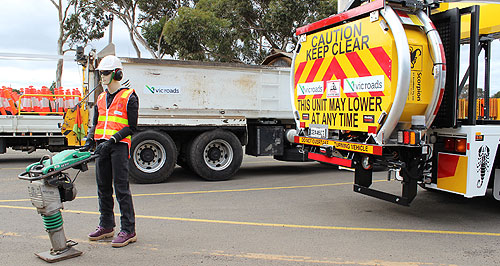Make / Model Search
News - General News - SafetyVicRoads reverses to the futureReversal of fortune: VicRoads is retro-fitting automatic reverse braking onto its fleet of 40 trucks. Radar and autonomous braking will be retro-fitted to authority’s truck fleet19 Aug 2015 By IAN PORTER VICTORIAN roads safety authority VicRoads has announced it will retro-fit radar-based automatic reverse braking systems to its road maintenance fleet in a bid to curb workplace death and injury. The Victorian government authority has completed a six-month trial with two trucks and is now converting another initial batch of 38 trucks at a cost of about $5000 a vehicle. It is planned to roll out the technology across the whole VicRoads fleet over time. VicRoads chief executive John Merritt said safety was of the utmost importance and that the automatic reverse braking technology would significantly improve safe working conditions for its employees. “The safety of our people and of the public is paramount and the autonomous braking system will make a difference,” he said after a demonstration of the technology this week. Mr Merritt pointed to WorkSafe Australia figures revealing that 18 workers were killed in reversing accidents across Australia between 2003 and 2012. Of those, six were killed while loading vehicles, five were engaged in traffic management and three were just moving around construction sites. VicRoads points out that the system will also prove valuable in residential areas, where it is possible for a child or pedestrian to find themselves behind a reversing truck. The six-month trial involved a patrol truck and a tip-truck, and the feedback from drivers was “very positive”, according to VicRoads. The radar-based system comes from Reverse Smart in the United Kingdom and is fitted in Victoria by A1 Roadlines. It is suitable for any truck with air brakes. VicRoads chose the radar-based system because the unit is not affected by rain, debris or grit like sonic systems are. Radar systems work in all conditions, while reversing cameras are limited in dusk and the dark. VicRoads believes fitting the Reverse Smart system to its trucks is helping to pioneer the adoption of reverse automatic braking on trucks in Australia. “The technology works alongside other safety systems already in operation and complements our suite of workplace procedures,” Mr Merritt said. “We believe this technology will significantly reduce worksite risks and we hope it will become standard across the industry. “Our dedication to workplace safety never ends and VicRoads will continue to consider any new technology which may save lives.” The decision fits within a safety first pattern that has been established by the Victorian government over the years. Victoria was the first state to mandate the fitting of seatbelts and, more recently, was the first to mandate the fitting of electronic stability control systems. It also reflects Mr Merritt’s previous roles. He started with VicRoads on May after four years as chief executive of the Environment Protection Authority. Before that was executive director of WorkSafe and chief executive of the National Safety Council.  Read more |
Click to shareGeneral News articlesResearch General News Motor industry news |











Facebook Twitter Instagram